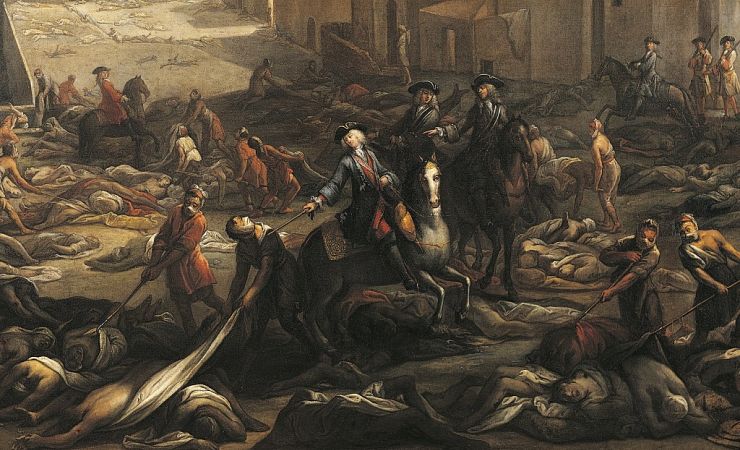COVID-19 UK: How Do Pandemics Come to an End?

In the midst of the present chaos, it is easy to forget that the world has had pandemics before and that they have come to an end. Can we learn anything from these experiences that might help us in dealing with COVID-19?
Note first that no pandemic has actually wiped out humanity. While this may seem obvious, given that our species is still around, it is important for injecting some sense of proportion into the risks represented by SARS-CoV-2. We are right to be concerned, because we are dealing with a virus that is novel to our species, but it is not an existential threat. At most, it shows that our belief in the possibility of fully controlling the natural world is a comfortable illusion. For any virus, or bacterium, humans and animals constitute a single pool of prospective hosts. Any mutation that allows an organism to enlarge its share of that pool contributes to its prospects for survival and reproduction. Viruses and bacteria have always moved, in both directions, between animals and humans – and will continue to do so.
Nevertheless, pandemics do ultimately come to an end in one of four ways:
1) There is no one left to infect.
a) The death rate has been so high that the population has thinned to such an extent that the infection cannot be passed from one person to another;
b) The organism has eliminated all but a sub-group of the population who have a resistant genotype;
c) People have recovered from the infection with an immunity that lasts long enough to mean they cannot be reinfected quickly enough for the organism to survive.
The Black Death in 14th century Europe illustrates the first two of these. Infectious diseases require a certain density of population to travel between humans, or between humans and animals. The Black Death is thought to have had a case fatality rate of around 80 per cent in bubonic form and almost 100 per cent in pneumonic form. It killed somewhere between 30 and 60 percent of the European population, obliterating entire villages and provoking considerable social and economic changes. Many survivors seem to have carried genes that conferred some immunity, selecting for a distinctive genotype that is still visible in European populations. The disease retreated to its animal reservoir, although it continued to cross over to humans until the 19th century. An example of the third might be the ‘Sweating Sickness’ that appeared several times in 16th century England. Various organisms have been proposed as the cause of these epidemics but they do not seem to have spread to mainland Europe. This disease remains something of an historical mystery.
2) Some environmental change interrupts transmission of the organism
Plague eventually died out in Europe because humans increasingly lived in ways that distanced them from rat populations. It remains endemic among some animal populations in the southwest USA, but is now treatable with antibiotics. A contemporary example might be HIV, where transmission was radically reduced by changes in sexual practices, the greater use of condoms, and the increased availability of safe injection methods for drug users.
3) The organism mutates to become less virulent
This may have happened with some of the coronaviruses that cause the common cold. These would originally have entered human populations in much the same way as SARS-CoV-2 but became less virulent and more transmissible. Evolutionary processes tend to favour less severe forms of disease organisms, because the victim survives longer and can infect more people. A less disabling infection may also lead to less self-isolation in a sick bed and, again, create more opportunities for transmission as everyday life continues.
4) An effective vaccine or therapy is developed and the organism does not mutate fast enough to escape it. If there is no animal species to act as a reservoir, the disease can be eradicated.
The only successful example is smallpox eradication, declared complete in 1980 by the World Health Organisation. This required 20 years’ work, involving an extraordinary degree of international co-operation despite the Cold War between the USA and the USSR and their competition for global hegemony. Poliomyelitis is approaching eradication, but this has also taken more than twenty years’ work under WHO leadership. Eradication may also be achievable by the use of a therapy that prevents transmission, rather than a vaccine that generates an immune response – HIV and PrEP is an example.
SARS-CoV-2 does not seem likely to be eliminated by the first mechanism: people do not die from the infection in large enough numbers. There may be genetic influences on survival but these do not seem to be sufficient to create a resistant population through selective reproduction. There is still uncertainty about how much immunity follows recovery and how long it will last. It is not clear that any environmental change will interrupt transmission sufficiently to eradicate the virus. Some advocates of mask wearing and social distancing might make this claim.
The evidence for the benefits of either is, though, so uncertain that they seem unlikely to be decisive, especially with a virus that can be passed on through asymptomatic individuals or before symptoms emerge. By comparison, SARS–CoV-1 was not infectious until symptoms emerged. This made it feasible to isolate sick people before they had many contacts. Mutation is a stronger possibility, if this is how other coronaviruses survived in human populations. If 80-85 percent of people who contract COVID-19 only have a mild to moderate illness, that is a powerful selection pressure. The prospects for a vaccine are uncertain but many in that field seem sceptical that it will be anything like as effective as the childhood vaccinations that we take as models.
We may get lucky – but it seems to be just as likely that we need to learn to live with this virus much as we have learned to live with influenza. I hope to return to this theme in a future post.



















































































